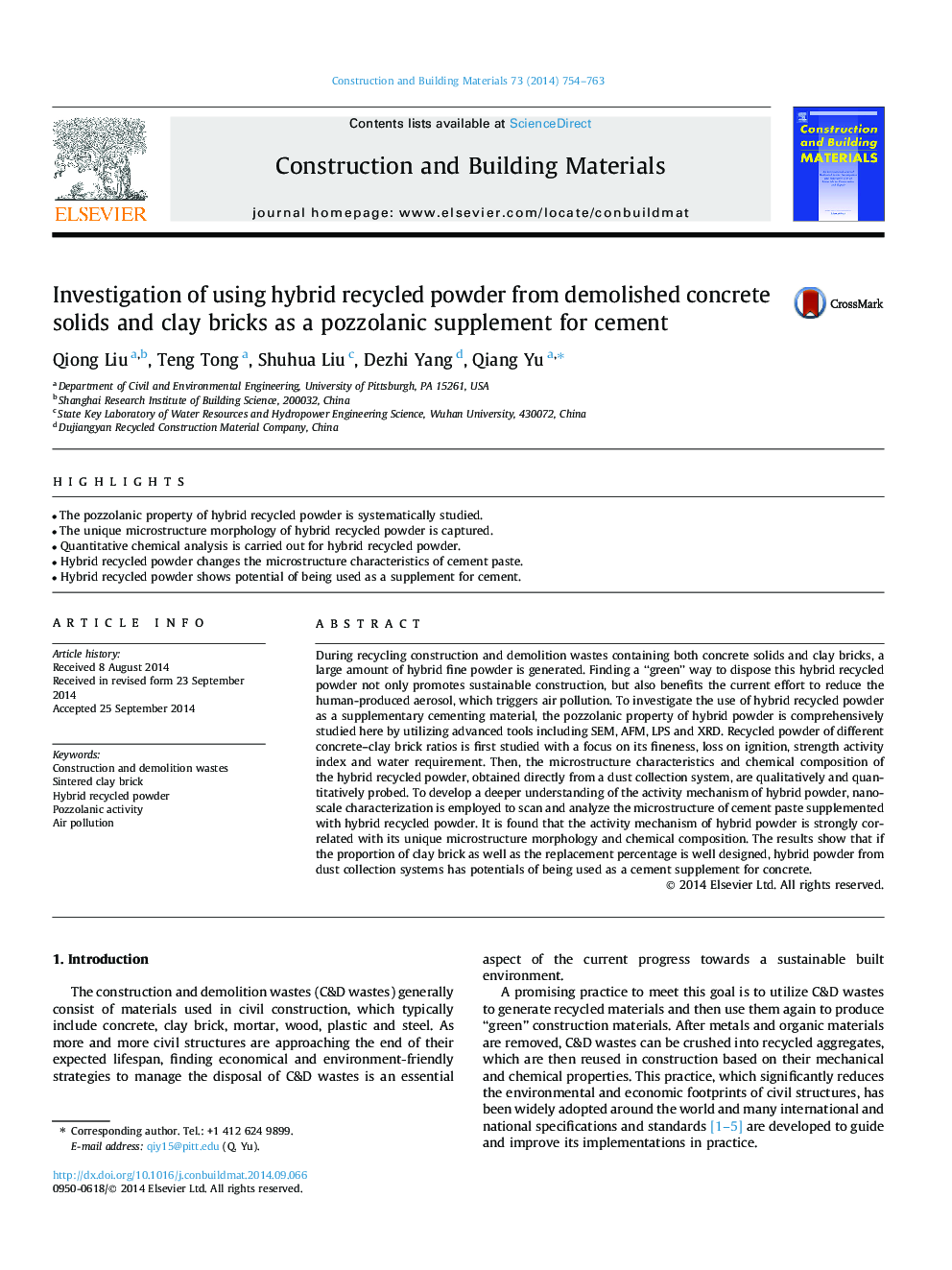| Article ID | Journal | Published Year | Pages | File Type |
|---|---|---|---|---|
| 6722213 | Construction and Building Materials | 2014 | 10 Pages |
Abstract
During recycling construction and demolition wastes containing both concrete solids and clay bricks, a large amount of hybrid fine powder is generated. Finding a “green” way to dispose this hybrid recycled powder not only promotes sustainable construction, but also benefits the current effort to reduce the human-produced aerosol, which triggers air pollution. To investigate the use of hybrid recycled powder as a supplementary cementing material, the pozzolanic property of hybrid powder is comprehensively studied here by utilizing advanced tools including SEM, AFM, LPS and XRD. Recycled powder of different concrete-clay brick ratios is first studied with a focus on its fineness, loss on ignition, strength activity index and water requirement. Then, the microstructure characteristics and chemical composition of the hybrid recycled powder, obtained directly from a dust collection system, are qualitatively and quantitatively probed. To develop a deeper understanding of the activity mechanism of hybrid powder, nanoscale characterization is employed to scan and analyze the microstructure of cement paste supplemented with hybrid recycled powder. It is found that the activity mechanism of hybrid powder is strongly correlated with its unique microstructure morphology and chemical composition. The results show that if the proportion of clay brick as well as the replacement percentage is well designed, hybrid powder from dust collection systems has potentials of being used as a cement supplement for concrete.
Related Topics
Physical Sciences and Engineering
Engineering
Civil and Structural Engineering
Authors
Qiong Liu, Teng Tong, Shuhua Liu, Dezhi Yang, Qiang Yu,
